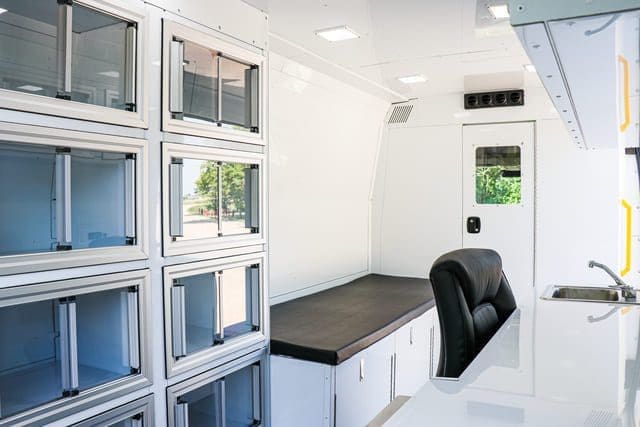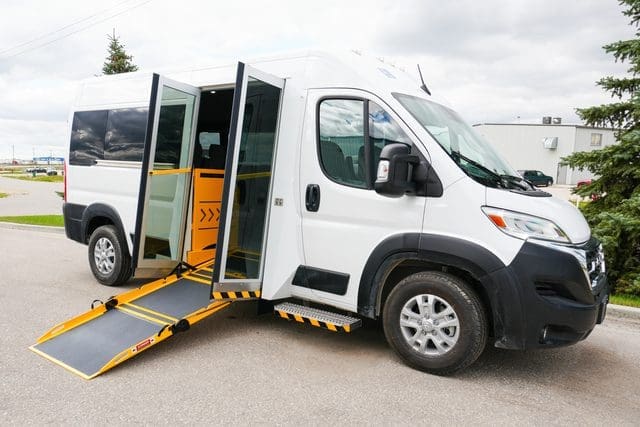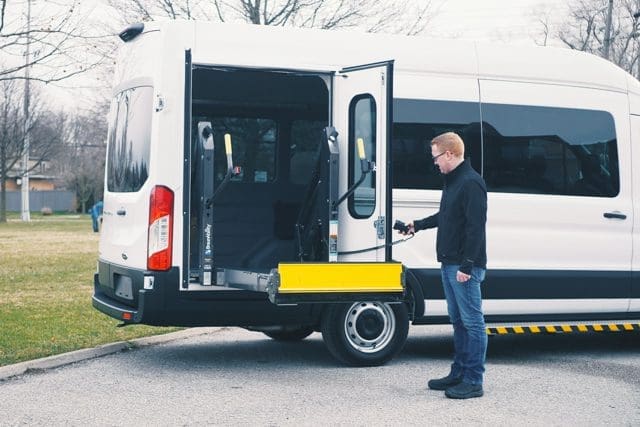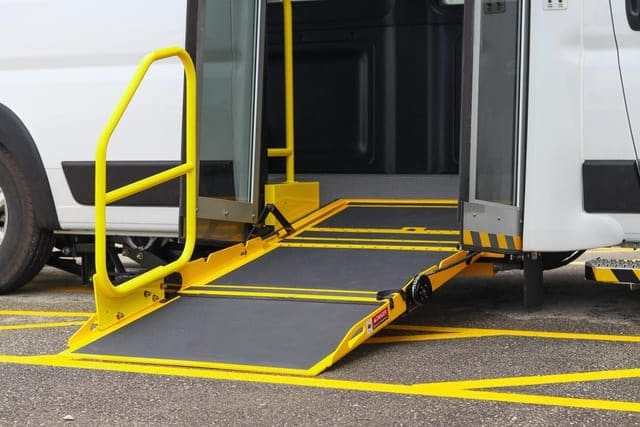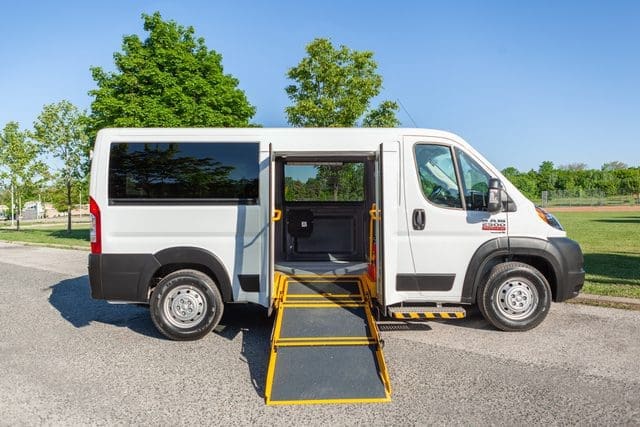Did you know that about 1 in 10 ER visits in Canada are for wound care? That’s a lot of patients needing help for something urgent but not life-threatening. For many hospitals, this adds to an already packed emergency room. Long wait times frustrate patients and can lead to serious issues like infections or delayed treatment. On top of that, the pressure on healthcare workers grows, leading to burnout and more stress.
Now imagine this: what if there was a way to help ERs handle wound care outside the hospital? Mobile wound care services could be the answer. They offer treatment closer to patients while easing the workload on busy emergency rooms.
At MoveMobility, we’ve spent 20+ years creating vehicles for organizations like Transdev that make healthcare more accessible. We’re all about breaking barriers and saving lives. While we know we’re not the only option, we’re committed to sharing helpful solutions for everyone.
In this article, we’ll explore what mobile wound care services are, how they can reduce wait times in emergency rooms, and the key features of a mobile wound care clinic. Let’s dive in and see how this innovative solution could help your community.
The crowded healthcare system: why some patients don’t need the ER
Emergency rooms in Canada are busier than ever, with some waiting up to 22 hours for hospital beds. Over 1,500 people die every year because of crowded emergency rooms. People show up for all kinds of reasons, from life-threatening emergencies to minor wounds.
But here’s the thing—not everyone needs to be there. A small cut or scrape might not seem like a big deal, but when people visit the ER for these issues, it can cause serious problems.
Why does this happen?
- Many people don’t know where else to go for wound care
- Some communities don’t have enough walk-in clinics or urgent care options
- Long travel distances make the ER seem like the only choice
The problem with overcrowding:
When ERs are full, it’s harder for doctors and nurses to focus on patients with critical needs like heart attacks or strokes. Long wait times can make minor wounds worse, risking infections. And let’s not forget the stress it puts on healthcare workers—more patients mean more burnout and mistakes.
This is both frustrating and dangerous for patients. A crowded ER means life-threatening emergencies might not get the quick attention they deserve. That’s why finding solutions, like mobile wound care services, is so important. They can handle minor wounds elsewhere, freeing up ER staff to save lives.
What are mobile wound care services?
Mobile wound care services bring healthcare right to the patient. Instead of making someone drive to a hospital or clinic for wound treatment, these services use a mobile wound care clinic to deliver care where it’s needed. Think of it as a mini-clinic on wheels, fully stocked to handle cuts, scrapes, and other minor wounds.
For example, imagine a senior living in a small community with no nearby hospital. They have a wound that needs regular cleaning and dressing. Without a mobile wound care clinic, they’d need to drive six hours to the nearest hospital—not just once, but for every follow-up visit. That’s exhausting, expensive, and, in many cases, impossible. Now, picture that senior getting the care they need right in their own community because a mobile wound care service rolled up to their door.
Why it matters to hospitals and emergency rooms:
- Treating minor wounds outside the ER frees up space for serious emergencies
- It helps shorten long wait times for patients who really need to be there
- Staff can focus on critical cases, like heart attacks or strokes
For patients heading to Google and searching for ‘mobile wound care near me’ or hospitals trying to manage overcrowding, this solution is a win for everyone. It’s about better access to care and smoother healthcare systems.
What vehicles can be used for mobile wound care services?
When it comes to setting up mobile wound care services, the type of vehicle you choose makes a big difference. Each option has its strengths, and the right fit depends on what you need for your patients and community. Here’s a look at the most common vehicles used for mobile wound care clinics:
| Vehicle Type | Pros | Cons |
| Vans |
|
Limited space compared to larger vehicles. |
| RVs |
|
|
| Buses |
|
|
| Trucks |
|
|
| Trailers |
|
|
Why do vans stand out? Vans offer a nice balance between size, cost, and customization. They’re easy to navigate through neighborhoods, don’t take up much parking space, and can still house all the essentials for wound care. That makes them a great option for both rural areas and busy city streets.
Choosing the right vehicle depends on your specific needs, but vans often provide the most practical mix of mobility and efficiency for mobile wound care services.
What features does a mobile wound care clinic have?
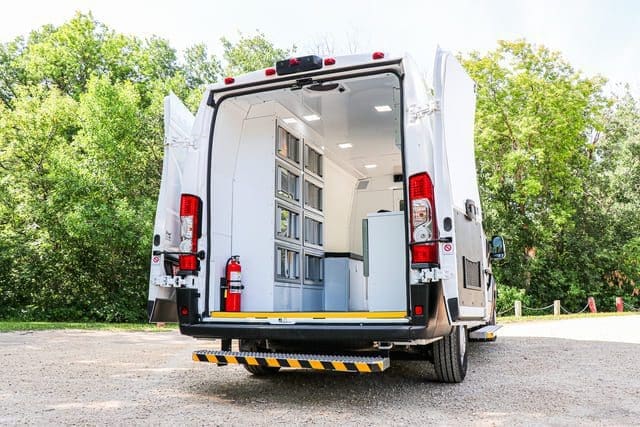
At MoveMobility, we transform vans into mobile wound care clinics that feel like a “doctor’s office on wheels.” These vans are designed to handle everything from basic wound cleaning to more advanced care, all while ensuring patients and healthcare teams have what they need. Let’s look at the key features and how they benefit patients during wound care:
“Doctor’s office on wheels” setup: Patients feel like they’re in a real clinic, which helps them feel comfortable and confident about their care. It’s clean, organized, and ready to handle wound treatment.
Cabinetry for supplies: Medicines, bandages, and wound-cleaning tools are stored neatly and within reach. This means less time looking for supplies and more time focusing on the wound.
Patient bed with storage: A firm bed gives patients a steady, safe spot to lie down during treatment. The under-bed storage can also keep extra bandages or supplies close so care isn’t interrupted.
Sink, fridge, and power options: A sink helps keep things clean, while a fridge stores medicines or cooling packs that might be needed for wound care. Power options keep all the equipment running smoothly.
Rear heat & air conditioning: This keeps the space comfortable for patients while their wounds are cleaned or bandaged, no matter the weather.
Clean, comfortable environment: Patients relax in a clean, welcoming space, which is especially important when they’re nervous or in pain.
Office desk space: The team can sit down to document the wound care visit right away, ensuring nothing gets missed.
Overhead lighting: Bright light makes it easier to clean wounds, apply dressings, and spot any signs of infection.
These features make wound care quick, safe, and easy, so patients get the best treatment without needing to travel to a hospital.
Ready to reduce ER wait times with mobile wound care clinics?
You landed on this article because you’ve likely noticed how crowded emergency rooms have become, especially with patients needing care for minor wounds. It’s frustrating for patients and staff, and it can mean life-threatening emergencies don’t get the attention they need.
Now, you know how mobile wound care services can be a game-changer. They:
- Bring care to patients who face healthcare barriers
- Ease pressure on hospitals
- Give communities better access to wound treatment
It’s a smart solution for a big problem.
At MoveMobility, we invest a lot of resources in creating vehicles that change how healthcare works. We see these vans as tools that save lives and time, reduce stress, and improve care for patients and healthcare teams. We’re passionate about making healthcare more accessible because every patient deserves the best care, no matter where they live.
If you’re ready to explore how a mobile wound care clinic could work for your hospital or community, click the button below to talk to one of our mobility experts.
Not ready to chat yet? No problem! Take a look at some of our other resources to learn more about how mobile clinics can make a difference.
Start by checking out the video below to learn more about the Mobile Clinic Van and how your organization can use it for mobile wound care services.
After that, watch our other video about the customizations you can make to your mobile clinic.


